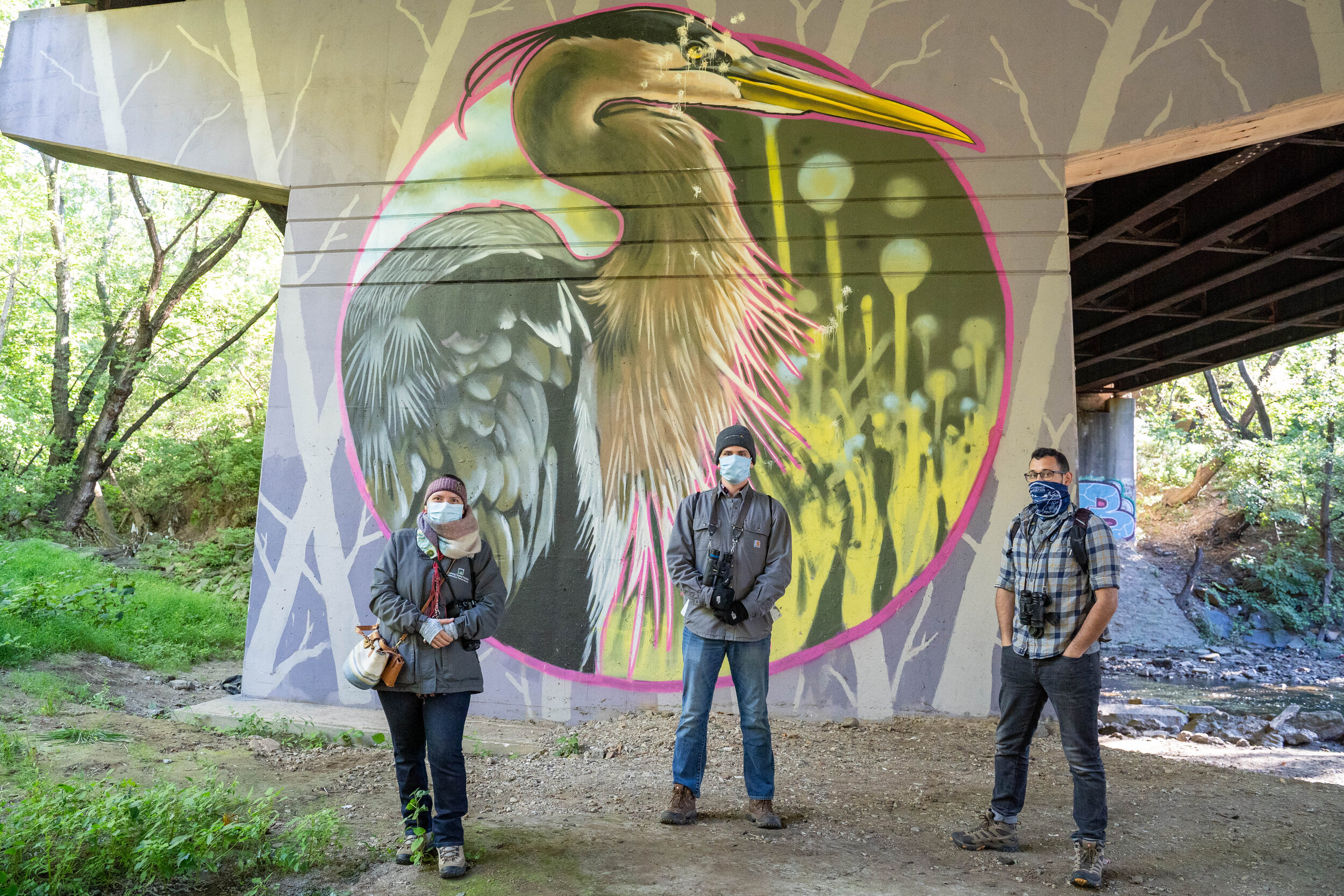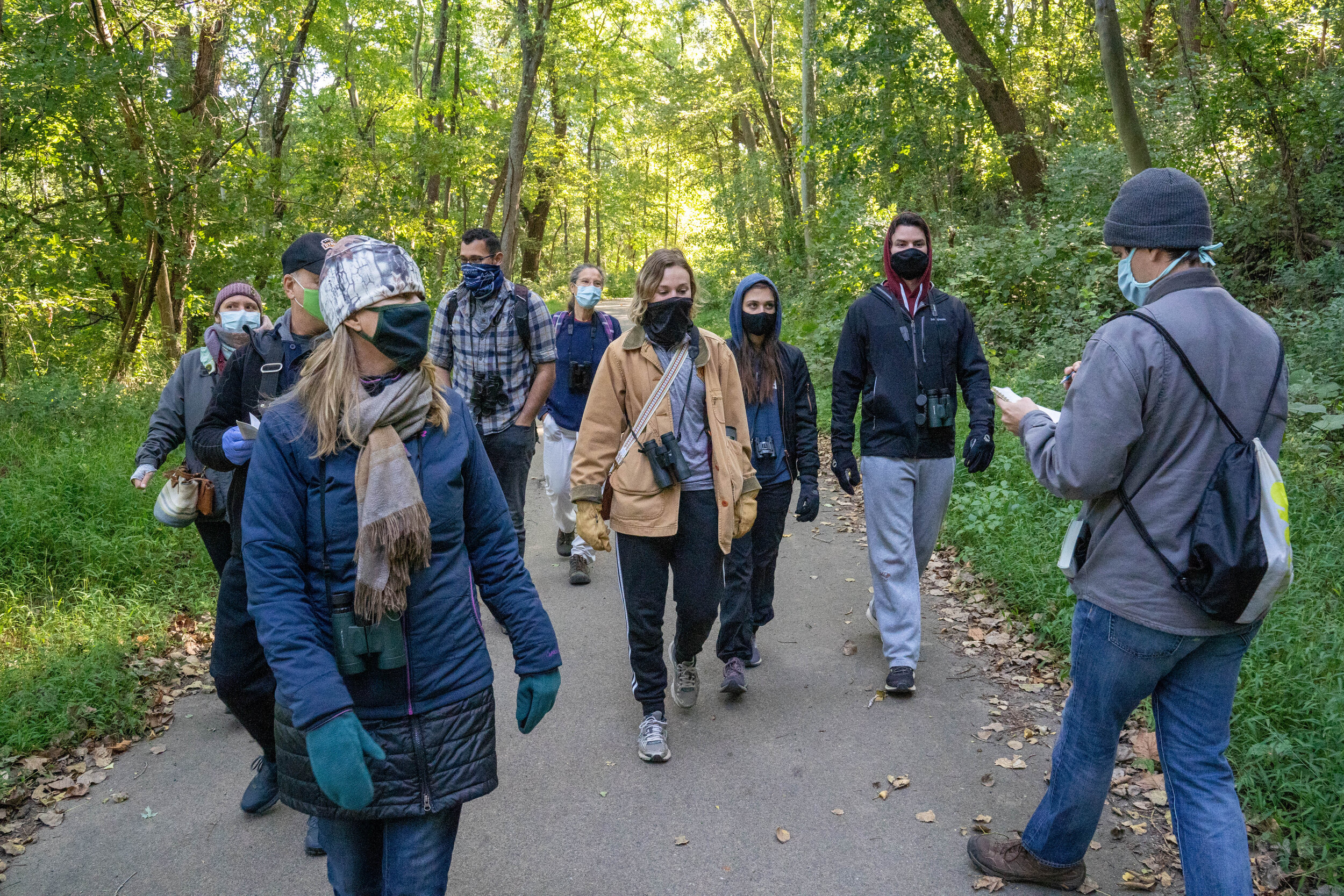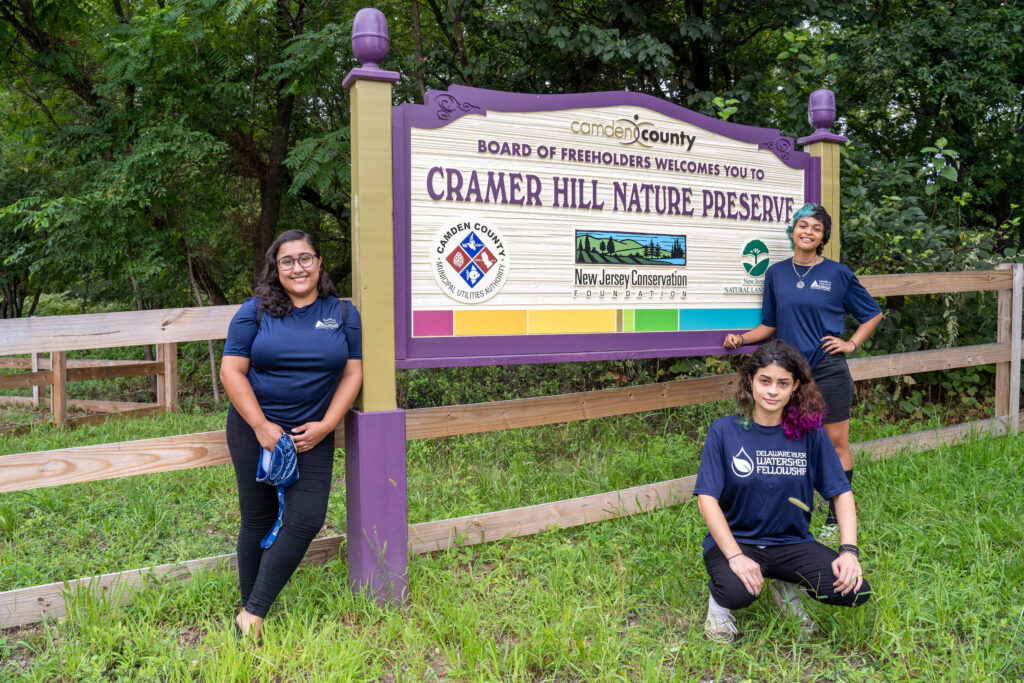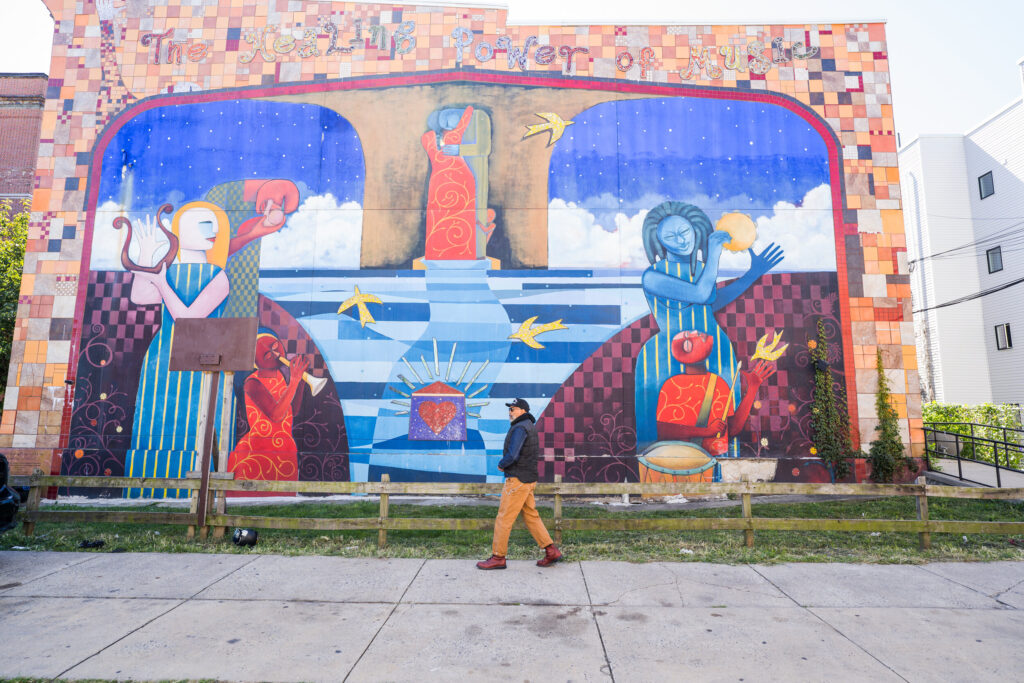Ten adults dressed in layers, hats and face masks gathered on a chilly September morning to go birding in Tacony Creek Park.
They kept a couple yards apart from each other while peering through binoculars at local birds such as robins, kingfishers and cardinals along with some recently arrived winter visitors like a red-breasted nuthatch and a yellow-bellied sapsucker.
What made this outing remarkable is that the walk leader, environmental educator Brandon McCracken, was identifying and discussing the birds in Spanish as well as English.
Although it is rare to hear a nature walk of any kind conducted in a language other than English in the Philadelphia area, Spanish and other languages are common to hear in Tacony Creek Park and its surrounding neighborhoods.
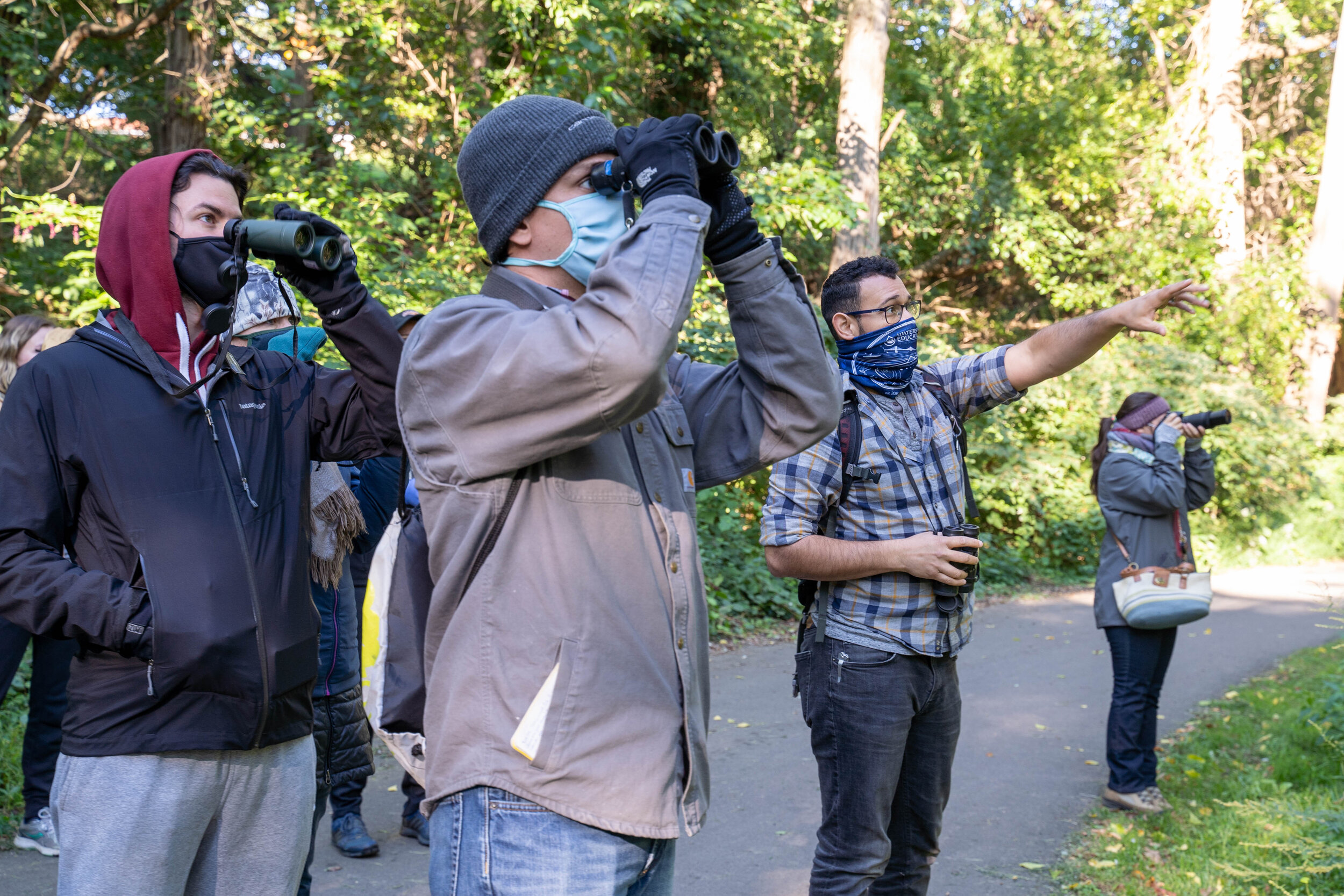
“We did a demographic survey last summer,” says Julie Slavet, the executive director of the Tookany/Tacony-Frankford Watershed Partnership (TTF), which sponsored the walk. According to the survey report, about 41% of the people living in the area speak a language other than English at home. For 26%, that language is Spanish.
“There were a lot of people who just don’t know that there is a park,” she continued, noting that the population of the surrounding neighborhood is turning over. Many Black and white residents are aging and their kids are moving away, Slavet says. Many newcomers speak Spanish, so in order to appeal to all neighbors, the park realized it needed to communicate in Spanish as well.
The need for bilingual materials became apparent to Doryán De Angel, community watershed leader for TTF, at outreach events they held in the Philadelphia neighborhoods within the watershed, which begins in suburban Montgomery County and extends along the creek (which has three names along its course) into North Philadelphia to the Delaware River waterfront.
“It was incredible how much Spanish I ended up speaking,” says De Angel, who started her job in 2014. “We were giving away materials in English and we realized we need to have these in Spanish, so these families can see what we’re doing and receive the message.”
TTF, which published an English-language birding guide to Tacony Creek Park in 2016, published a Spanish translation of the guide in June 2020.
TTF offers environmental education walks, some focusing on birding, as part of its broader watershed education mission. De Angel could translate when she joined the walks, but “just because I speak Spanish, I don’t necessarily know birds,” she says. “We needed someone bilingual who knows birds.”
In 2019, TTF hired McCracken to lead a series of bilingual walks held in partnership with the Schuylkill Center for Environmental Education and Riverfront North. The walks combined nature observation with education about ways participants could improve the health of the watershed, for example, reducing the use of de-icing salt in winter and gardening with native plants.
In 2020, TTF followed up with a series of bilingual birding walks.
“The biggest challenge for me was teaching myself the bird-specific vocabulary, the common names,” says McCracken, who grew up speaking Spanish at home with his Peruvian father. “So, leading up, I made myself these virtual flashcards. After that I felt pretty good about it.”
Common names for birds in Spanish can be particularly challenging, since a single type of bird can have different names depending on the country or region. An aguililla cola roja (red-tailed hawk) in Mexico is a guaraguao in Puerto Rico. (This happens in English as well. Many of our hawks would be called “buzzards” in the United Kingdom.)
Gonzalo Pavón Valerio, who grew up in Mexico and is most comfortable speaking Spanish, and his wife, Enriqueta Estrada, who is from Philadelphia and is fully bilingual, have attended all of the bilingual walks, “so he can talk in his own language,” says Estrada.
“Oh, it’s wonderful,” Estrada says, “it’s really something different to do. You get transported into a different place. All you see is trees, and the creek, it’s really nice. It’s relaxing.”
Pavón Valerio says he is particularly a fan of raptors like falcons and eagles.
“We’re the kind of people who love to see animals,” says Pavón Valerio.



